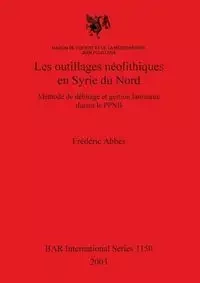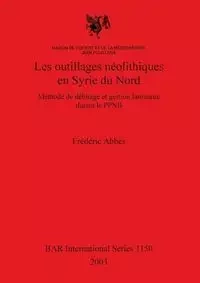Les outillages néolithiques en Syrie du Nord - Abbès Frédéric
- Méthode de débitage et gestion laminaire durant le PPNB
The period which extended from the 10th to the 8th millennium BP in the Near East corresponds to the PPNB phase of the Neolithic (Pre-Pottery Neolithic B). During this period the last constituent elements of the Near Eastern Neolithic fell into place. The populations were living in sedentary village communities practicing an agriculture in which wheat and barley were the main crops. During the early PPNB (9500-9200), hunting was the only real means of procuring meat. Herding did not appear until the middle PPNB (9200-8500 BP) and then progressively replaced hunting. It is within this context of transformation of the relation between man and his environment that the flint tools and weapons of this study are situated. They come from three Syrian sites: the early PPNB levels of Sheikh Hassan and Mureybet, the levels of the beginning of the middle PPNB of Mureybet and a late PPNB level of El Kowm 2 Caracol. The lithic industries of the PPNB are characterized by tools and weapons made primarily on large blades. The archetypes for this blade debitage are the bipolar nuclei and their variants, the naviform nuclei and the posterolateral ridge nuclei. The difficulty of distinguishing between these types of debitage has often given the impression of their uniformity throughout the PPNB. The goal of this analysis is to demonstrate new chrono-cultural distinctions between these systems of knapping. Thus, through technological analysis, the author proposes new hypotheses concerning the significance of debitage development and its place in the Neolithisation process.
EAN: 9781841715209




The period which extended from the 10th to the 8th millennium BP in the Near East corresponds to the PPNB phase of the Neolithic (Pre-Pottery Neolithic B). During this period the last constituent elements of the Near Eastern Neolithic fell into place. The populations were living in sedentary village communities practicing an agriculture in which wheat and barley were the main crops. During the early PPNB (9500-9200), hunting was the only real means of procuring meat. Herding did not appear until the middle PPNB (9200-8500 BP) and then progressively replaced hunting. It is within this context of transformation of the relation between man and his environment that the flint tools and weapons of this study are situated. They come from three Syrian sites: the early PPNB levels of Sheikh Hassan and Mureybet, the levels of the beginning of the middle PPNB of Mureybet and a late PPNB level of El Kowm 2 Caracol. The lithic industries of the PPNB are characterized by tools and weapons made primarily on large blades. The archetypes for this blade debitage are the bipolar nuclei and their variants, the naviform nuclei and the posterolateral ridge nuclei. The difficulty of distinguishing between these types of debitage has often given the impression of their uniformity throughout the PPNB. The goal of this analysis is to demonstrate new chrono-cultural distinctions between these systems of knapping. Thus, through technological analysis, the author proposes new hypotheses concerning the significance of debitage development and its place in the Neolithisation process.
EAN: 9781841715209

